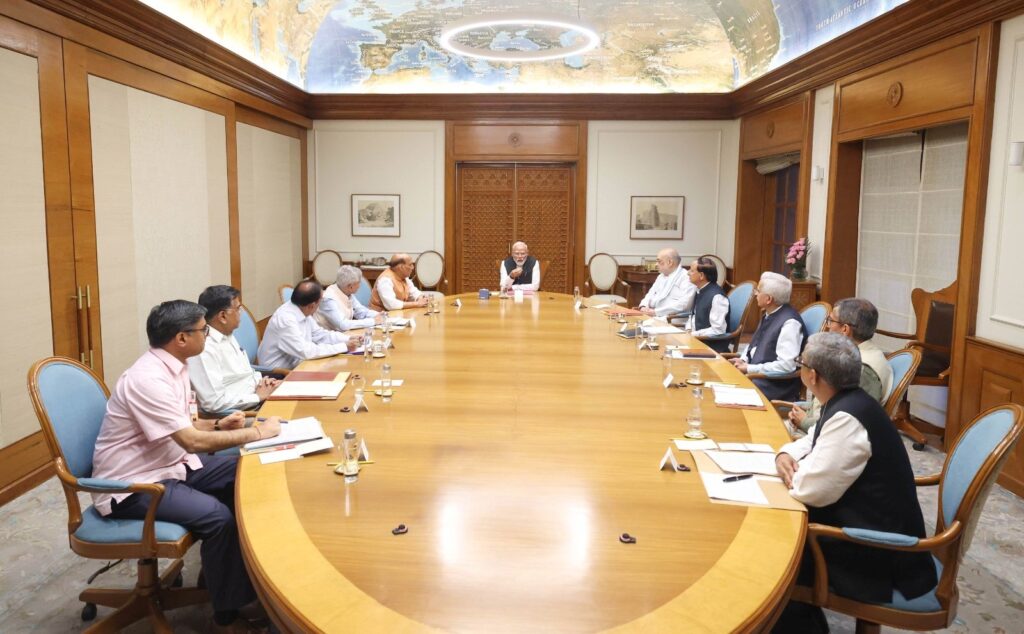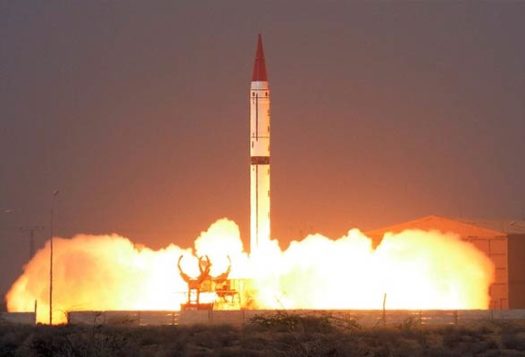
On Tuesday, April 22, terrorists attacked a group of tourists in Indian-administered Kashmir, killing 26 people and injuring several more. It appears to be the worst massacre of Indian civilians in the insurgency-afflicted state of Kashmir in at least 20 years.
India has long blamed Pakistan for most of the violence in Kashmir – a mountainous border region both countries claim as part of their territory. The group that claimed responsibility for this week’s attack, The Resistance Front (TRF), is relatively new. Many in India see TRF as a proxy for an older Pakistan-based terrorist group, the Lashkar-e-Taiba (LeT).
Previous Attacks Have Led to Military Crises
India’s Prime Minister Narendra Modi came into office in 2014. On two prior occasions during Modi’s tenure, separatists conducted large-scale attacks in Kashmir that became India-Pakistan crises. In 2016, at Uri, 19 Indian soldiers died in an attack by separatist militants. In 2019, at Pulwama, 40 Indian paramilitary troops died when a suicide bomber detonated his vehicle next to their convoy.
India has long blamed Pakistan for most of the violence in Kashmir – a mountainous border region both countries claim as part of their territory. The group that claimed responsibility for this week’s attack, The Resistance Front (TRF), is relatively new.
Both of these earlier attacks prompted retaliatory attacks on Pakistan. In 2016, India retaliated with a series of “surgical strikes” by Indian special operations forces along and across the fortified Line of Control that divides the Indian-administered from the Pakistan-administered portions of the disputed territory of Kashmir. In 2019, India opted to use stand-off airstrikes that appear to have missed their intended target, but not before they triggered a multi-day military crisis.
Modi’s government opted several months after the 2019 attack and subsequent crisis to change Kashmir’s status within the Indian constitution. In August 2019, the Modi government effectively ended constitutional autonomy that Kashmir had enjoyed since the 1950s.
India’s Hardline Response to Violence
During India’s general election campaign last year, the BJP-led government emphasized that India had and would respond forcefully to terror attacks. Prime Minister Modi told a crowd in Pune in April 2024, “How can we forget those times when there used to be terrorist attacks and bomb blasts everyday…. [B]ut does that happen anymore?…. This is Modi, [we] will enter the house (of terrorists) and kill them.” India’s defense minister, Rajnath Singh told the media that same month, “If any terrorist tries to disturb the peace in Bharat [India], or tries to carry out terror activities in Bharat, we will give them ‘muh tod jawab’ [jaw-breaking reply]. If they run to Pakistan, we will enter Pakistan and kill them.”

I wrote last year in reflecting on the anniversary of the 2019 attacks and ensuing crisis:
Strategically, [Indian] messaging seeks to reinforce the expectation that terror attacks in India – at least of a certain size – will cause Indian retaliation. That certainty would then dispel any false optimism on the part of plotters outside India that New Delhi would tolerate the attack. The goal is to reinforce deterrence and prevent attacks in the first place. However, the danger with such clear signaling is that if an attack occurs that exceeds the Uri threshold – where 19 Indian soldiers were killed – this will put strong pressures on the Indian state to retaliate, even when the strategic logic might suggest that inaction is wise.
The consensus in India—at least in traditional and social media—appears to be that the strategic and political logic merits forceful retaliation. Lt. Gen. (retd.) K.J.S. Dhillon, a former senior commander in Kashmir, said, “We have to hit [the] Pakistan Army because that is where it hurts the most.” Former Army chief Gen. (retd.) M. M. Naravane argued, “ It is time for India to bare its fangs and not fall prey to calls for restraint, or third-party assurances.” Ashok Malik, a former senior advisor to the foreign ministry during the Modi years, posted on social media, “This requires a response.”
What Happens Now?
The Trump administration was quick to send expressions of support to India. President Donald Trump on his social media site, Truth Social, stated, “United States stands strong with India against Terrorism” and that “Prime Minister Modi, and the incredible people of India, have our full support and deepest sympathies.” In their readout of a call between Trump and Modi, the Indian external affairs ministry said the U.S. president went even further and “expressed full support to India to bring to justice the perpetrators of this heinous attack.” Along with other similar statements of public support by U.S. administration officials, this will likely be taken as a green light by India to take whatever actions it deems necessary in the coming days.
The consensus in India—at least in traditional and social media—appears to be that the strategic and political logic merits forceful retaliation. Lt. Gen. (retd.) K.J.S. Dhillon, a former senior commander in Kashmir, said, “We have to hit [the] Pakistan Army because that is where it hurts the most.”
Modi cut short his visit to Saudi Arabia and returned to India, summoning his ministers for an urgent meeting. India announced on Wednesday that it will take several diplomatic and legal steps, including reducing the size of Pakistan’s diplomatic mission in India, expelling Pakistan’s military attachés, closing a major border crossing, cancelling visas for Pakistanis in India, and putting the 1960 Indus Waters Treaty that governs important water rights between India and Pakistan “in abeyance.”
Whether there will be an Indian military response in coming days remains to be seen. Or will India turn again to air strikes to express its displeasure, as it did in 2019? Will India opt for ground attacks, like it did in 2016? Could India formally end the 2021 ceasefire for troops deployed along the Line of Control in Kashmir?
Any of these moves could also become part of India’s retaliation, adding new strains to relations between India and Pakistan. Having already taken serious diplomatic steps, it would be quite surprising if India’s response did not include military means. If so, dangerous days are ahead on the subcontinent.
Editor’s Note: This piece originally appeared on Good Authority and has been republished with permission from its editors.
Views expressed are the author’s own and do not necessarily reflect the positions of South Asian Voices, the Stimson Center, or our supporters.
***
Image 1: TAUSEEF MUSTAFA/AFP via Getty Images
Image 2: Narendra Modi via X


